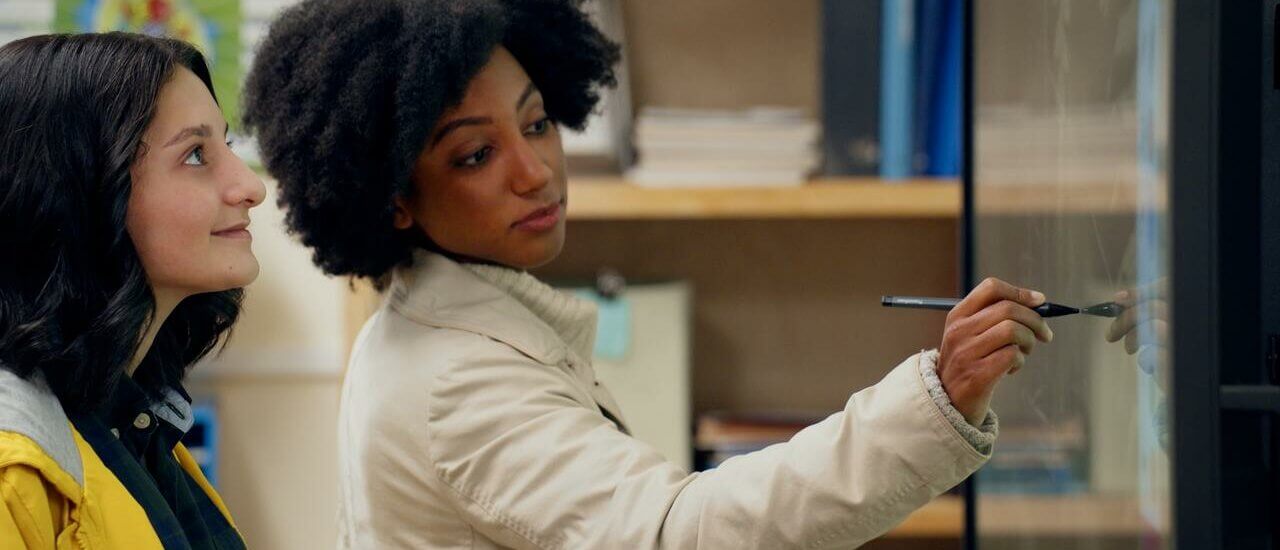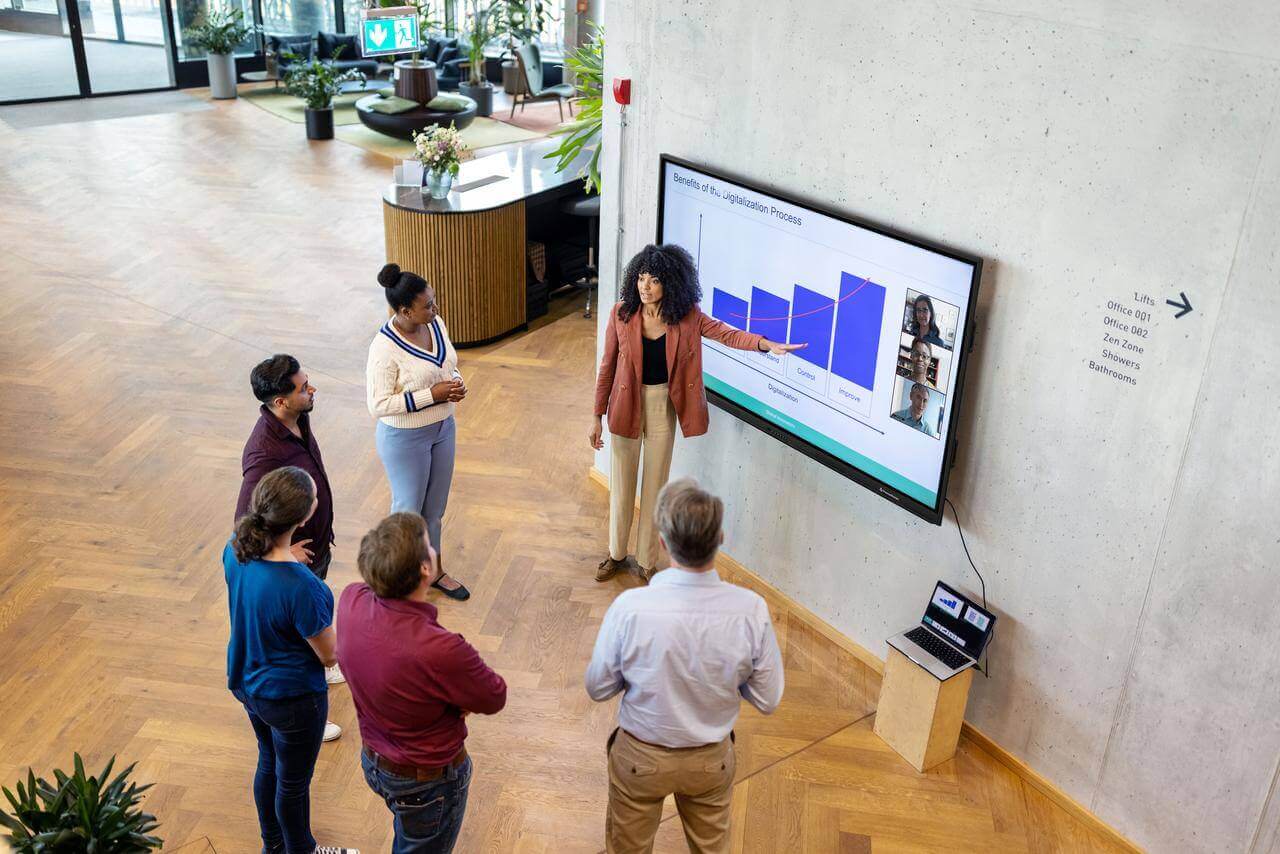Published on September 3rd, 2024
Problem Solving Activities to Improve Team Cohesion
16 minute read

Team cohesion is a measure of how successfully members of a team work with one another. Employees in a cohesive working environment will have a greater focus on group success rather than their individual success, and will typically have a good understanding of their own strengths and how they can best contribute to a group. A 2021 study by Gartner found that highly cohesive teams are 37% more likely to sustain good workforce health.
Team cohesion is important because it’s one of the most vital components of effective problem solving. Everybody approaches problem solving differently. Those who are more cautious will find problems in every solution, while the more optimistic among us may overlook potential hazards; some see problems as a barrier, others as a challenge. All of these are valid perspectives and play an important role in designing effective solutions, but we need to understand the strengths of our team members to do this.
Team Building Problem-Solving Activities and Exercises
Team building is the medium through which we are able to explore the strengths and ways of working with those in our team, and it’s an essential aspect of building team cohesion. The team building activities below have been chosen specifically to enhance team problem solving.
Story Improv
Skills developed: Listening, creativity
Activity description: Most participants will have played a variation of this game in their childhoods, and it’s certainly one of the simplest games in this list, yet incredibly effective at encouraging creative thinking. All you need to do is suggest a theme or outline a scenario and begin your narrative with one sentence. The story is then handed to the next person for them to add a sentence to, and gradually, the group weaves a narrative together. This helps to build listening skills, as players are unable to move the narrative forward unless they have all the information, and it also encourages creative thought and the contribution of ideas.
To make this a problem-solving activity, you can set a number of objectives that the narrative – or even the characters within the narrative – must achieve. This encourages the group to work together to move their story towards each of the objectives. You can also stipulate that each sentence begins with a specific letter of the alphabet or has to include at least one object, one action, and one adjectival description.
The Human Knot
Skills developed: Team building, problem solving, logic development
Activity description: Sometimes, it can be useful to get into the 3D space and introduce some kinetic energy to your group problem-solving activities – especially for teams who are desk-based or spend a lot of time working remotely. For this activity, you’ll divide your team into groups of even numbers with at least six members. Ask the participants of each group to stand in a circle facing each other and raise their right hands. They must grasp hands with another member of their group but it cannot be either of the members standing directly next to them. The group will then repeat this process with their left hands.
The aim of the game is to untangle the knot. Making one move at a time, players can step over, under or through linked hands, but they must not let go of each other’s hands at any point. Most groups will soon find out that untangling the knot is impossible, so you can intervene to ‘cut the links’ twice, allowing players to drop hands to complete a move. The game ends when teams get as close as possible to untying their knot.
This is a great activity for team bonding and learning to work together in pursuit of a shared goal in a fun, relaxed atmosphere. It can also be repeated until teams succeed in untangling themselves.
Role Reversal
Skills developed: Empathy, perspective, understanding
Activity description: This is a great workplace-based activity to help your team better understand the nature of each other’s roles and some of the unique challenges they each face. It also helps to build understanding and improve team cohesion. It’s particularly useful if you manage a team where each member has a very defined set of individual roles.
The principle is simple – for a morning or perhaps an entire day, each member of the team will switch job roles with another. This may require an element of training and skill sharing in the first instance, allowing team members to expand their skill sets. You can even do this across hierarchies, having team leaders switch roles with team members, which also provides development opportunities. You will, of course, need to put some parameters in place, such as ensuring that no deliverables are submitted without approval of the appropriate team member or that traditional roles are resumed for any unforeseen urgent matters.
Dumbest Idea First
Skills developed: Creativity, improvisation, receptiveness
Activity description: Have you ever sat in a meeting and had an idea for a solution to a problem but doubted yourself, only for someone else to pose that same solution and for it to be well received? This is something that most people will have experienced, and this task is designed to build comfort in contributing ideas, proving to be one of the most liberating creative problem-solving activities for adults.
All you need to do is pose a problem to your team and ask them to come up with the dumbest, most ludicrous solutions. It stimulates free thought in a fun, constructive environment. Afterwards, you’ll ask the team to go through each solution and comment on the merits of that suggestion. It encourages people to be receptive to each other’s ideas and to look for the strengths in a given scenario.
Virtual Escape Rooms
Skills developed: Lateral thinking, teamwork, collaboration
Activity description: Just like their real-life counterparts, virtual escape rooms are a great way to get your team out of the office mindset and collaborate on a variety of logic problems to achieve a shared goal. Virtual escape rooms are ideal if you have a hybrid or even an entirely remote workforce. With the aid of an interactive display, your office workers can collaborate on the problems in person while your remote workers dial in – everyone can see each other and work together in real-time to solve the puzzles. Alternatively, players can take part remotely, dialling in from their own computers and working together over a conferencing app.
Escape rooms have proven to be one of the most popular virtual problem-solving activities, and there are plenty of online providers of escape room games, including those that specialise in games for team problem solving in the workplace. They’re a great way to facilitate team bonding, boost morale, and encourage a creative and collaborative approach to problem solving.
Desert Island Survival
Skills developed: Rationalisation, prioritisation, and persuasion
The activity: Your team is on an expedition, flying over the Pacific Ocean, when the engines in their aeroplane start to lose power. The pilot estimates that she can keep the plane in the air for approximately 20 minutes, enough time to reach the nearest deserted island. Luckily, there are enough parachutes on board for everyone and an extra parachute for a crate of supplies. Unfortunately, it’s a small crate and only has room for five items. The radio has gone down, so your team must choose their supplies carefully, anticipating needing to survive on the island for several weeks before rescue. They must choose from the following items on board, and they must reach a group consensus:
- A book of matches
- A pack of six chocolate bars
- A waterproof tarpaulin
- A book on how to hunt the local fauna
- A bottle of water
- A bottle of whisky
- A rope
- A fishing rod
- A first aid kit
- A pocket knife
- Insect repellent
- A shaving mirror
- A can of petrol
- A map of the Pacific Ocean
- A spade
Some items may not be what they seem. For example, the mirror could be used to signal planes, the alcohol for sterilisation, the bottle of water as a container, and the book as fuel for starting a fire. Some teams will jump straight into debate and establish leadership roles, while others will work more methodically, individually giving items prioritisation scores before compiling the results democratically. The essence of this problem-solving exercise lies in persuasive argument, resolving conflict, and reaching a group decision.
The Trolley Problem
Skills developed: Critical thinking, rationalisation, and prioritisation
The activity: You’ll probably have encountered the trolley problem before. It’s a thought experiment that explores ethical reasoning and it’s one of the classic problem-solving exercises. The scenario poses an onlooker the opportunity to save five people in danger of being hit by a railroad cart. All they have to do is flick a switch to divert the cart onto a separate track where it will hit just one person. The dilemma, of course, is that the consequences will be a direct result of the onlooker’s actions. Conversely, if they do nothing, they cannot be said to have directly caused an accident.
Ethical dilemmas like this, where there are no right answers and no clear course of action are a great way to simulate business decision-making. Split your team into groups of three or four and give them 15 minutes to discuss the problem. They must come to a consensus about what to do. The objective of this activity isn’t to reach the correct answer but to rationalise their thought processes, decide on a course of action as a team, and practice making difficult decisions.
Blind Blocks
Skills developed: Communication, team building
Activity description: Using a set of coloured building blocks, you’ll assemble a multicoloured, three-dimensional shape, keeping it out of view of your participants. You’ll then give participants an identical set of building blocks and ask them to recreate the shape. The catch is that only one of them is allowed to see your original construction. That person can relay information back to the rest of the team, but they’re not allowed to touch any of the blocks. If this proves too easy, you can stipulate that the person relaying instructions is unable to see their team’s reconstruction, and you can even plant a mole in the team, whose job it is to deliberately misinterpret the instructions and lead the rest of the team astray.
This team problem-solving activity underscores the importance of good communication and clear instructions.
Trust Walk
Skills developed: Communication, trust
Activity description: For this activity, all you’ll need is a large outdoor space, two balls of string, and a blindfold. Use the string to mark out the edges of a path, which will snake back and forth around your chosen space. Now, divide your group into pairs. One half of each pair will be blindfolded, and the other will be responsible for guiding the blindfolded member through the maze. The guide isn’t allowed to touch their partner but must direct them using verbal cues only. The aim of the game is to get to the end of the maze without straying outside of the parameters of the path.
To make it more difficult, you can add obstacles – such as sheets of paper – to the maze that participants must step over. Safety is of paramount importance with this activity, so make sure that your obstacles won’t present tripping hazards and that the space is clear of all other hazards.
Improve Your Team Cohesion
Interested in improving your team collaboration and exploring digital tools that can bring everyone together and facilitate problem solving? Book a free demo of Promethean products.
Recommended reading:




